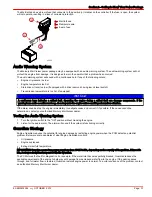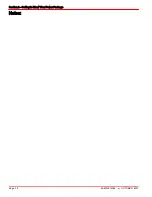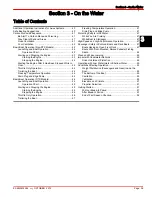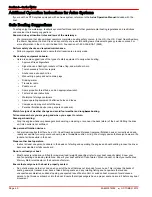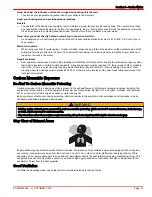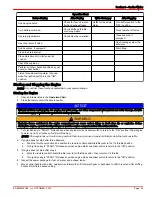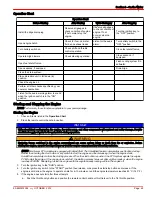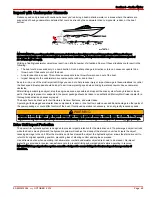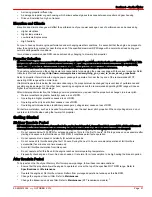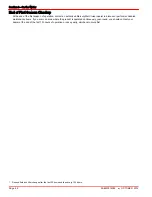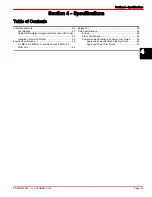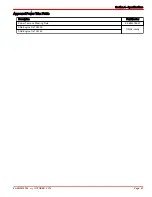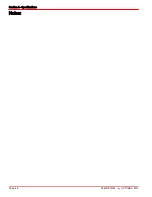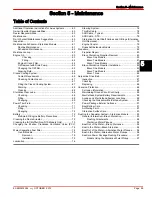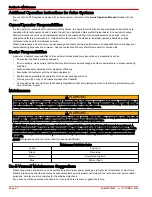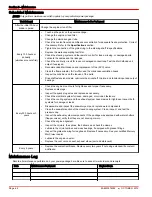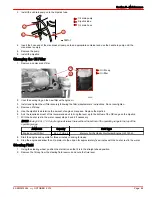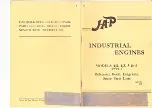
Section 3 - On the Water
90-8M0074352
eng
OCTOBER 2012
Page 51
•
A missing propeller diffuser ring
•
A damaged propeller or gear housing, which allows exhaust gases to escape between propeller and gear housing
•
Drive unit installed too high on transom
Elevation and Climate
Elevation and climate changes will affect the performance of your power package. Loss of performance can be caused by:
•
Higher elevations
•
Higher temperatures
•
Low barometric pressures
•
High humidity
For you to have optimum engine performance under changing weather conditions, it is essential that the engine be propped to
allow the engine to operate at or near the top end of the specified maximum RPM range with a normal boat load during your
normal boating weather conditions.
In most cases, recommended RPM can be achieved by changing to a lower pitch propeller.
Propeller Selection
IMPORTANT: The engines covered in this manual are equipped with an RPM rev‑limiter that is set to an upper RPM limit. This
limit, which is slightly above the normal operating range of the engine, helps prevent damage from excessive engine RPM.
Once the RPM returns to the recommended operating RPM range, normal engine operation resumes.
The boat manufacturer and the selling dealer are responsible for equipping the power package with the correct propeller. Refer
to Mercury Marine's web page
http://www.mercurymarine.com/everything_you_need_to_know_about_propellers6
.
Select a propeller that will allow the engine power package to operate at or near the top end of the recommended WOT
operating RPM range with a normal load.
If full‑throttle operation is below the recommended range, the propeller must be changed to prevent loss of performance and
possible engine damage. On the other hand, operating an engine above the recommended operating RPM range will cause
higher than normal wear and damage.
After initial propeller selection, the following common problems may require that the propeller be changed to a lower pitch.
•
Warmer weather and greater humidity cause a loss of RPM.
•
Operating in a higher elevation causes a loss of RPM.
•
Operating with a dirty boat bottom causes a loss of RPM.
•
Operating with increased load (additional passengers, pulling skiers) causes a loss of RPM.
For better acceleration, such as is needed for waterskiing, use the next lower pitch propeller. When not pulling skiers, do not
operate at full throttle when using the lower pitch propeller.
Getting Started
20‑Hour Break‑In Period
IMPORTANT: The first 20 hours of operation is the engine break‑in period. Correct break‑in is essential to obtain minimum oil
consumption and maximum engine performance. During this break‑in period, the following rules must be observed:
•
Do not operate below 1500 RPM for extended periods of time for the first 10 hours. Shift into gear as soon as possible after
starting and advance the throttle above 1500 RPM if conditions permit safe operation.
•
Do not operate at one speed consistently for extended periods.
•
Do not exceed 3/4 throttle during the first 10 hours. During the next 10 hours, occasional operation at full throttle is
permissible (five minutes at a time maximum).
•
Avoid full throttle acceleration from idle speed.
•
Do not operate at full throttle until the engine reaches normal operating temperature.
•
Frequently check engine oil level. Add oil as needed. It is normal for oil consumption to be high during the break‑in period.
After Break‑In Period
To help extend the life of your Mercury MerCruiser power package, follow these recommendations:
•
Ensure that the propeller allows the engine to operate at or near the top of the specified WOT RPM range. Refer to
Specifications
and
Maintenance
.
•
Operate the engine at 3/4 throttle or lower. Refrain from prolonged operation at wide‑open throttle RPM.
•
Change the engine oil and oil filter. Refer to
Maintenance
.
•
Change the transmission oil and filter. Refer to
Maintenance
(ZF Transmission models).
1.

